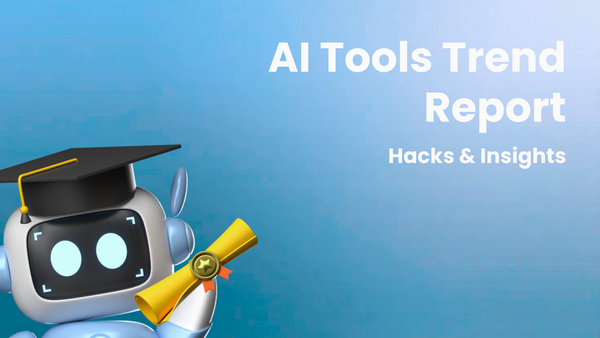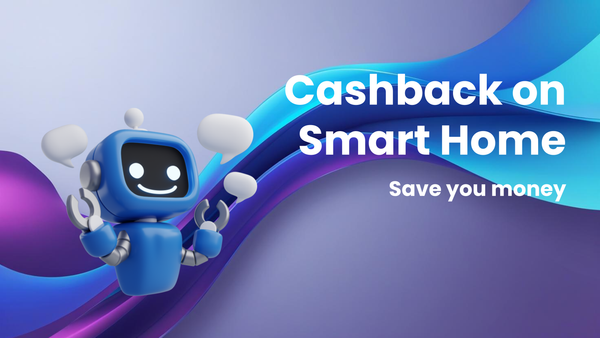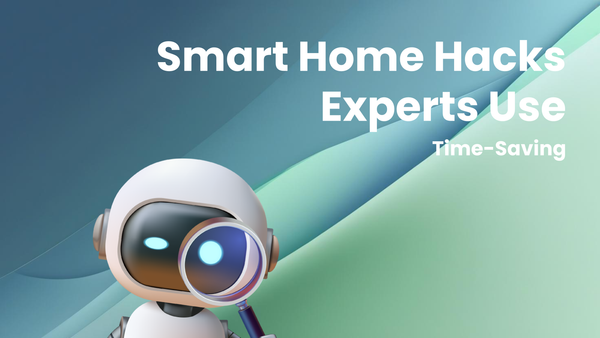Decoding Buyer Behavior Using AI Price Tracking

Decoding Buyer Behavior Using AI Price Tracking: A Deep Dive
Imagine predicting your customer's next move with uncanny accuracy. What if you could anticipate their price sensitivity and tailor your offerings to maximize sales? It's no longer science fiction. Artificial intelligence (AI)-powered price tracking is revolutionizing how businesses understand and leverage buyer behavior. Many businesses are leaving money on the table by ignoring the powerful insights hidden within dynamic pricing data.
This article will take you beyond the buzzwords, providing a comprehensive understanding of how AI price tracking works, its practical applications, and how you can harness its power to optimize your pricing strategies and gain a competitive edge. Consider this your roadmap to understanding and implementing AI-driven price intelligence.
I. Understanding the Core: AI Price Tracking Explained
AI price tracking, at its core, is the automated monitoring and analysis of product prices across various online and offline sources. It leverages the power of artificial intelligence, specifically machine learning, to go beyond simple data aggregation and extract meaningful insights about consumer price sensitivity and competitor strategies. It’s not just about knowing the lowest price; it's about understanding why that price exists and how it influences purchasing decisions.
A. The Genesis of Price Tracking:
Traditionally, price tracking involved manual data collection – a tedious and time-consuming process. Employees would manually visit competitor websites, record prices in spreadsheets, and attempt to identify trends. This method was not only inefficient but also prone to errors and unable to keep pace with the rapidly changing market. The rise of e-commerce and dynamic pricing strategies intensified the need for a more sophisticated solution.
The introduction of basic price scraping tools automated the data collection process, but they lacked the analytical capabilities to make sense of the vast amounts of data generated. AI changed the game. By applying machine learning algorithms, businesses could now automatically identify patterns, predict price changes, and gain a deeper understanding of customer behavior.
B. Defining AI in Price Tracking:
AI in price tracking involves several key components:
- Automated Data Collection: AI-powered crawlers automatically gather price data from various sources, including competitor websites, online marketplaces, and even social media platforms.
- Data Cleaning and Processing: The raw data collected is often messy and inconsistent. AI algorithms clean and standardize the data, removing errors and ensuring accuracy.
- Price Trend Analysis: Machine learning models analyze historical price data to identify trends, seasonality, and patterns in price fluctuations.
- Competitor Analysis: AI identifies key competitors and tracks their pricing strategies, promotions, and product offerings.
- Price Optimization: Based on the insights gained, AI algorithms recommend optimal pricing strategies to maximize sales, profit margins, and market share.
C. Why This Matters: Beyond Simple Price Monitoring
The value of AI price tracking extends far beyond simply knowing the lowest price on the market. It empowers businesses to:
- Understand Customer Price Sensitivity: Identify the price points at which customers are more likely to purchase a product.
- Optimize Pricing Strategies: Dynamically adjust prices based on real-time market conditions and competitor actions.
- Improve Profit Margins: Identify opportunities to increase prices without losing sales volume.
- Gain a Competitive Advantage: Stay ahead of competitors by anticipating their pricing moves and responding proactively.
- Personalize Pricing: Tailor prices to individual customers based on their past purchasing behavior and preferences.
- Enhance Inventory Management: Predict demand based on price fluctuations and adjust inventory levels accordingly.
Example: A major online retailer uses AI price tracking to monitor the prices of its competitors for electronics. The AI not only tracks prices but also analyzes the promotional strategies of its competitors, such as free shipping or bundled offers. Based on this information, the retailer can dynamically adjust its prices to remain competitive while maximizing profit margins. For instance, if a competitor offers a discount on a particular TV model, the AI might recommend a slightly lower price or a free accessory to maintain market share.
II. Deep Dive: How AI Price Tracking Works
AI price tracking is a complex process involving several interconnected steps. Understanding these steps is crucial for appreciating the power and limitations of this technology.
A. The Mechanics of Data Collection:
The first step is gathering the raw data. This is typically done using web crawlers or "spiders" programmed to automatically navigate websites and extract relevant information.
- Web Crawlers: These programs simulate human browsing behavior, visiting websites and extracting data based on predefined rules. They can handle complex website structures and dynamically generated content.
- APIs (Application Programming Interfaces): Some retailers and marketplaces offer APIs that allow direct access to their pricing data. This is a more efficient and reliable method than web crawling, as it eliminates the need to parse HTML code.
- Data Quality is Crucial: The accuracy of the data collected is paramount. AI algorithms are only as good as the data they are fed. Therefore, it's essential to implement robust data cleaning and validation processes.
B. AI-Powered Data Processing:
Once the data is collected, it needs to be cleaned, standardized, and transformed into a format suitable for analysis. This is where AI algorithms come into play.
- Data Cleaning: This involves removing errors, duplicates, and inconsistencies from the data. AI can automatically identify and correct these issues using techniques such as pattern recognition and anomaly detection.
- Product Matching: Identifying identical products across different websites is a challenging task. AI can use image recognition and natural language processing (NLP) to match products based on their visual appearance and textual descriptions.
- Attribute Extraction: Extracting relevant attributes from product descriptions, such as size, color, and features, is essential for accurate price comparison. NLP techniques can be used to automatically extract these attributes.
C. Advanced Analytics and Predictive Modeling:
With the data cleaned and processed, the next step is to apply advanced analytics and predictive modeling techniques to extract meaningful insights.
- Price Trend Analysis: Machine learning models, such as time series analysis and regression analysis, can be used to identify trends, seasonality, and patterns in price fluctuations.
- Demand Forecasting: Predicting future demand based on price changes, promotional activities, and other factors is crucial for optimizing inventory levels and pricing strategies.
- Competitor Analysis: AI can identify key competitors and track their pricing strategies, promotions, and product offerings. This information can be used to develop competitive pricing strategies.
- Price Elasticity Analysis: Understanding how demand changes in response to price changes is essential for optimizing pricing strategies. AI can estimate price elasticity using historical sales data and statistical models.
D. The "What If" Scenarios and Common Pitfalls:
Understanding potential pitfalls is just as important as understanding the core mechanics.
- The "Data Deluge" Problem: Without proper filtering and analysis, the sheer volume of price data can be overwhelming. Businesses need to focus on the most relevant data and develop strategies for handling large datasets.
- Ignoring Contextual Factors: Price is not the only factor that influences purchasing decisions. Factors such as shipping costs, delivery time, and customer reviews also play a significant role. AI models should consider these contextual factors to provide more accurate insights.
- Over-Reliance on Automation: While AI can automate many aspects of price tracking, it's essential to maintain human oversight. Algorithms can make mistakes, and human judgment is often needed to interpret the results and make informed decisions.
- The Ethics of Price Tracking: Businesses must be transparent about their price tracking practices and avoid engaging in deceptive or unethical pricing strategies.
Example: A small online clothing retailer implemented AI price tracking to monitor the prices of its competitors. However, they failed to account for shipping costs when comparing prices. As a result, they were undercutting their competitors on price but losing money on shipping. Once they adjusted their AI model to include shipping costs, they were able to optimize their pricing strategy and improve their profit margins.
III. Diverse Perspectives: The Pros, Cons, and Debates
Like any powerful technology, AI price tracking isn't without its critics and controversies. A balanced perspective requires acknowledging both its advantages and disadvantages, as well as the ongoing debates surrounding its use.
A. The Advantages: A compelling case
- Increased Efficiency: Automates data collection and analysis, freeing up employees to focus on more strategic tasks.
- Improved Accuracy: Reduces the risk of human error in data collection and analysis.
- Enhanced Decision-Making: Provides data-driven insights to support pricing decisions.
- Greater Competitiveness: Enables businesses to stay ahead of competitors by anticipating their pricing moves.
- Increased Profitability: Optimizes pricing strategies to maximize sales, profit margins, and market share.
B. The Disadvantages: Addressing the concerns
- Cost: Implementing and maintaining AI price tracking systems can be expensive.
- Complexity: Requires specialized expertise in data science, machine learning, and programming.
- Data Quality: The accuracy of the insights generated depends on the quality of the data collected.
- Ethical Concerns: Raises concerns about price discrimination and unfair pricing practices.
- "Race to the Bottom": Can lead to a price war among competitors, reducing profit margins for everyone.
C. The Debates: Navigating the gray areas
- Price Discrimination: Critics argue that AI price tracking can lead to price discrimination, where businesses charge different prices to different customers based on their perceived willingness to pay. While personalized pricing can benefit consumers by offering discounts to those who are price-sensitive, it can also be seen as unfair if it leads to higher prices for some customers.
- Algorithmic Collusion: There's concern that AI algorithms could independently learn to collude on prices, leading to artificially high prices for consumers. While explicit collusion is illegal, tacit collusion through AI algorithms is a more complex issue.
- Transparency and Explainability: AI models can be complex and opaque, making it difficult to understand how they arrive at their pricing recommendations. This lack of transparency can raise concerns about fairness and accountability.
Example: An airline uses AI price tracking to dynamically adjust ticket prices based on demand, time of day, and customer location. While this allows the airline to maximize revenue, it also raises concerns about price discrimination, as customers in different locations may be charged different prices for the same flight.
IV. Practical Application: A Step-by-Step Guide
Ready to leverage AI price tracking for your business? Here's a practical guide to get you started.
A. Define Your Objectives:
Before diving into the technical aspects, clarify your goals. What do you hope to achieve with AI price tracking? Are you looking to increase sales, improve profit margins, or gain a competitive advantage? Clearly defining your objectives will help you focus your efforts and measure your success.
B. Choose the Right Tools and Technologies:
There are numerous AI price tracking tools available on the market, each with its own strengths and weaknesses. Consider factors such as cost, features, scalability, and ease of use when making your selection.
- Off-the-Shelf Solutions: These are pre-built software platforms that offer a range of features, such as data collection, price analysis, and competitor tracking.
- Custom-Built Solutions: These are tailored to your specific needs and requirements. They offer greater flexibility and control but require more technical expertise.
- Hybrid Approach: This involves combining off-the-shelf solutions with custom-built components to create a solution that meets your specific needs.
C. Implement a Robust Data Management Process:
Data quality is crucial for the success of your AI price tracking efforts. Implement a robust data management process to ensure that the data collected is accurate, consistent, and complete.
- Data Validation: Implement data validation rules to ensure that the data collected meets certain criteria.
- Data Cleaning: Use AI algorithms to automatically identify and correct errors in the data.
- Data Storage: Store the data in a secure and scalable database.
D. Develop a Pricing Strategy:
Based on the insights gained from AI price tracking, develop a comprehensive pricing strategy that aligns with your business objectives.
- Competitive Pricing: Match or undercut your competitors' prices to attract customers.
- Value-Based Pricing: Set prices based on the perceived value of your products or services.
- Cost-Plus Pricing: Add a markup to your costs to determine your prices.
- Dynamic Pricing: Dynamically adjust prices based on real-time market conditions and competitor actions.
E. Monitor and Optimize Your Pricing Strategies:
AI price tracking is an ongoing process. Continuously monitor your pricing strategies and make adjustments as needed based on market conditions and customer behavior.
- A/B Testing: Experiment with different pricing strategies to see which ones perform best.
- Customer Feedback: Collect customer feedback on your pricing strategies.
- Performance Monitoring: Track key performance indicators (KPIs) such as sales, profit margins, and market share.
F. Common Mistakes to Avoid:
- Ignoring Shipping Costs: Failing to account for shipping costs when comparing prices.
- Over-Reliance on Automation: Relying too heavily on AI algorithms without human oversight.
- Ignoring Customer Feedback: Failing to collect and analyze customer feedback on your pricing strategies.
- Lack of Transparency: Failing to be transparent about your pricing practices.
Example: A furniture retailer used an off-the-shelf AI price tracking solution to monitor the prices of its competitors for living room sets. They implemented a dynamic pricing strategy that automatically adjusted prices based on competitor actions. They also conducted A/B testing to experiment with different pricing strategies. As a result, they were able to increase sales by 15% and improve profit margins by 5%.
V. Conclusion: Embracing the Future of Pricing
AI price tracking is transforming the way businesses understand and leverage buyer behavior. By automating data collection, analyzing price trends, and predicting customer demand, AI empowers businesses to optimize their pricing strategies and gain a competitive edge.
However, it's crucial to approach AI price tracking with a balanced perspective. While the benefits are undeniable, businesses must also be aware of the potential pitfalls and ethical concerns. By implementing a robust data management process, developing a comprehensive pricing strategy, and continuously monitoring and optimizing their efforts, businesses can harness the power of AI to unlock new levels of profitability and success.
The future of pricing is data-driven, dynamic, and personalized. Embrace the power of AI price tracking to stay ahead of the curve and thrive in the ever-evolving marketplace.
Next Steps:
- Research AI price tracking tools: Explore different solutions available and find one that fits your business needs.
- Start small: Begin by tracking the prices of a few key products and gradually expand your efforts.
- Seek expert advice: Consult with data scientists and pricing experts to develop a comprehensive AI price tracking strategy.
The journey to mastering AI price tracking is a continuous learning process. By staying informed, experimenting with different strategies, and adapting to the changing market conditions, you can unlock the full potential of this transformative technology.




